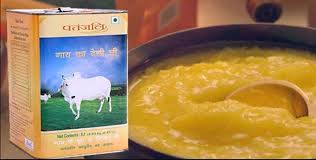The Spectre of Air Pollution Spreads its Tentacles Across India

By Rashme Sehgal
Dehradun: Come November and north India becomes a vast gas chamber with air pollution levels rising much beyond permissible levels. In 2014, WHO had warned the Indian government that Delhi had become the most polluted city in the world having overtaken the Chinese capital of Beijing.
Today 16 out of 20 of the most polluted cities in the world are found in India where particulate pollution (PM2.5) levels in the atmosphere exceed permissible levels by 500 per cent.
The list of polluted cities is growing longer. They include Delhi,Noida, Grugram, Gaziabad, Meerut, Patna, Gwalior, Raipur, Ahmedabad, Lucknow, Firozabad, Kanpur, Varanasi, Amritsar, Ludhiana, Allahabad, Agra and Khanna.
Most shockingly, the latest Central Pollution Control Board statistics reveal that the pollution levels in Gwalior and Raipur are higher than that of Delhi which means we have some of the most polluted zones in the world. While our cities average PM 2.5 levels of 140 and more, London has a PM2.5 reading of 16.
Beijing and Shanghai’s thick smog saw schools and offices being closed down and its municipality taking strict measures including taking cars off the roads in order to ensure pollution levels came down. No such strict action has been taken bas the Indian state.
WHO’s study on air pollution looked at 1,600 cities across 91 countries and showed Delhi had the world’s dirtiest air.
Lancet’s Global Burden of Disease study has further highlighted that air pollution is responsible for 3,283 premature deaths every day in India. More deaths than even what Covid 19 is presently causing.
With 2.5 million deaths in a year due to air pollution, it is killing more people than TB, AIDS and malaria put together.
Vivekanand Jha, executive director of the George Institute for Global Health has repeatedly emphasised how there are direct linkages of air pollution with heart attacks, stroke, diabetes, chronic kidney disease and cancer.
Former Minister of Environment Prakash Javadekar had launched a National Air Quay Index, AQI, to indicate the quality of air in a city insisting it cannot be business as usual. Sadly, when it comes to tackling this problem it continues to be business as usual.
AQI is presently monitoring air pollution levels in 46 cities with a million plus population and 20 state capitals. The stats it is providing are frightening with the graph rising across the sub-continent.
For one, air pollution remains a man-made catastrophe. Air pollution spikes have been the result of increasing emissions from vehicles and industry. The number of vehicles in India in 1951 were three million vehicles. By 2020, the number had crossed over 50 million.
Dr Sundeep Salvi, a pulmonologist and director of the Chest Research Foundation in Pune, who has been studying lung functions across rural and urban India, blames the heavy increase of vehicular traffic for plunging health levels.
“Vehicular emissions are responsible for 50% of Delhi’s air toxicity,” Dr Salvi pointed out.
Following the harvesting of rice in the months of October-November, Delhi’s air quality worsens due to stubble burning in the neighbouring states of Punjab and Haryana.
Uncontrolled bursting of firecrackers during Diwali spikes the air quality back to hazardous levels with certain areas like India Gate reporting AQI as high as 999 a day after Diwali.
To show, just how alarming the air pollution situation is, Dr Arvind Kumar, former chairman of the Centre for Chest Surgery at Sir Ganga Ram Hospital who also heads the Lung Care Foundation installed a pair of giant lungs outside the hospital in 2018.
Dr Kumar recreated human lungs with the help of HEPA (high efficiency particulate air) filters, which are used inside operation theatres to trap dust. And to imitate the working of a human lung, the lungs were fitted with fans. Six days later, the lungs had turned completely dark.
`I thought it would take at least one month for the lungs to get dark but the lungs changed colour in just 24 hours. On day 6, the lungs had become completely dark,” says Dr Kumar.
There are no nonsmokers in India says doctor who installed artificial lungs in Delhi to create awareness on air pollution
Dr Kumar blamed the poor air quality of the national capital to the city’s failure to tackle air pollution at multiple levels. He claimed that throughout the year, Delhi is exposed to PM 2.5 levels that are above 200 which is the equivalent of smoking over ten cigarettes a day, even for newborn children. What this means, says the doctor is: “There are no non-smokers in India. We have all become a nation of smokers.”
“This is a failure on the part of individuals, officials and organisations to take cognisance of the fact that breathing is killing. The bottom line is that breathing is killing,” he says.
Dr Kumar had appealed to politicians, religious organisations, state governments and central governments to take action, but in vain. “We are demanding immediate and serious steps to control pollution and not the adoption of cosmetic measures like the Graded Response Action Plan (GRAP),” he says.
Anumita Roychowdhury deputy director-general of the Delhi-based Centre for Science and Environment believes Dr Kumar is being too harsh.
“The Graded Response Action Plan (GRAP) has been designed on the lines of the mechanisms in place in Beijing and Paris. GRAP is legally binding and the government has to enforce it in the NCR. If air quality enters the poor category, it will involve shutting down of the Badarpur power plant, shutting down of brick kilns.
“When air quality enters the severe category, all construction activity is halted and the coal fired power stations are shut down. GRAP must act as a template for the rest of the country.”
With air quality having entered the hazardous levels, GRAP also ensures that all diesel generators be banned as well as industries using coal for fuel. Of course, the Supreme Court does intervene to put a temporary ban on the use of firecrackers but this can hardly be described as resolving this behemoth problem.
Most of these steps are brought in much too late and air pollution levels continue to remain hazardous with NCR residents praying for some showers to bring some respite.
The seriousness of air pollution across India can be gauged from the fact that ` half of the 252 cities in India have already crossed critically polluted levels,” Anumita Roychowdhary has warned.
`The centre needs to declare this a national emergency and treat this on a war footing,” she added.
A key but little mentioned factor that has contributed to the air pollution spike has been the rapid denudation of forests in and around the NCR. The Aravalli mountains with their forests protected the NCR and Delhi from the dust of Rajasthan.
“Increasing concretisation and the cutting down of forests has contributed to the present situation. We are facing an ecological crisis. Unless we come up with a comprehensive strategy to preserve our ecological resources, we will see an intensification of air pollution,” said Himanshu Thakkar, who heads SANDRP.
These warnings are going unheeded. During the summer months, a haze of polluted dust will spread across the whole of north India including Dehra Dun, Mussorie and Shimla. It gets dissipated only after a few heavy showers of rain.
A massive investment in public transport and especially electric buses provides the key to overcoming this problem. An efficient network of rail services is another solution as Mumbai has shown. Sadly, the government continues to strongly back the automobile industry at the cost of public transport.
The government needs to act swiftly or else it will not be able to cope with this major health epidemic. Sadly, the government’s focus continues to be on the Covid 19 pandemic and not on this far more insidious health hazard which is taking its toll on the public.





